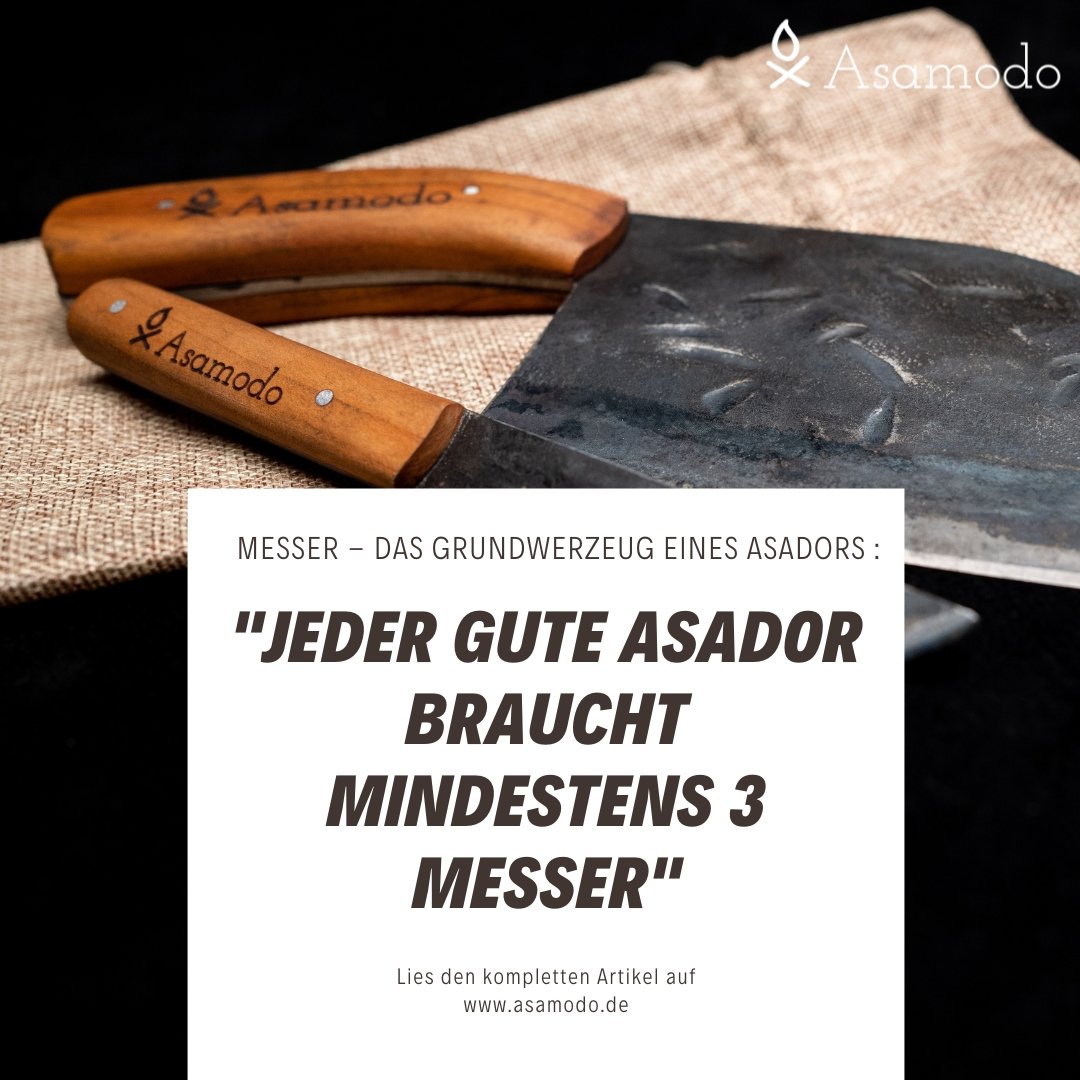One of the most important accessories of an Asador is his knives. How many do you really need for an Asado? How do you properly care for them and what should you keep in mind?
We have summarized the most important rules, care, and sharpening methods for you, so that you can shine with your knowledge and perfectly sharpened knives at your next Asado:
Rule No.1: You should always use 3 different knives. One for the vegetables, another for the raw meat, and the last one for the grilled food, otherwise cross-contamination can occur.
Rule No. 2: You should always use 3 different cutting boards. The same rule applies here as with the knives: one for vegetables, one for raw meat, and one for grilled meat, as otherwise cross-contamination can also occur.
Rule No. 3: Every 8 or 9 pieces of meat, you should sharpen your knives.

What is a cross combination?
Cross-contamination refers to the transfer of microorganisms, viruses, bacteria, or chemical substances from one surface or object to another. This can lead to contamination of food, work surfaces, instruments, or other items and poses a health risk. To avoid cross-contamination, it is important to apply hygienic practices such as cleaning and disinfecting surfaces, separating raw and cooked foods, and wearing gloves.
Proper sharpening with a sharpening stone:
Whetstones for knives are an essential part of knife maintenance. A whetstone is used to sharpen and polish the edge of a knife. It is important that the whetstones are used in a specific order to achieve an optimal result.
You should start with a coarse sharpening stone to sharpen the blade of the knife. Then a medium sharpening stone can be used to file the edge.
Finally, a fine sharpening stone can be used to polish the edge. Some sharpening stones also have a very fine side that can be used to achieve an especially sharp and shiny edge.

How do you maintain a sharpening stone?
One should also ensure that the sharpening stones are always kept clean to achieve an optimal result. After use, the sharpening stones should always be cleaned with water and soap to protect them from contamination. It is also recommended to replace the sharpening stones regularly to ensure that they are always in perfect condition and an optimal result can be achieved. Additionally, sharpening stones should only be used for knives and not for other tools, as the results may otherwise be unsatisfactory.
What is a Medin sharpening stone?
A Medin sharpening stone is a tool specifically designed to bring sharpness and hardness to knives and other tools. It is especially used in the Latin American region.
It is a very hard sharpening stone that contains more grit and abrasive particles than standard sharpening stones, making it an ideal tool for professional use. This sharpening stone is available in various grits and sizes to meet different requirements.
Step-by-step guide to the functioning of a Medin grinding stone:
- Choose the correct grit of the sharpening stone that matches your tool.
- Place the sharpening stone at the edge of the tool.
- Grind with light pressure against the edge.
- Grind the edge until the desired sharpness is achieved.
- Repeat the process if necessary.
- Wash the tool and the sharpening stone with soapy water.
- Thoroughly dry the tool and the grinding stone

No-gos and common mistakes when sanding
Under no circumstances should one attempt to sharpen the knife without cleaning it first, as this can lead to contamination. Additionally, one should never work on only one side, as this can result in uneven outcomes. Furthermore, one should not try to sharpen the knife without using the proper tools, as this may lead to poor results.
Which steel is used in knives?
It depends on the characteristics the knife should have. There are many different types of steel used for knives, including carbon steel, stainless steel, high-performance steel, rust-free steel, and Sandvik steel. Each of these types of steel has its own specific properties, which vary depending on the type of knife. For example, carbon steel is a more robust steel with higher sharpness and longer durability, while stainless steel offers longer durability and better corrosion resistance.

How do you prevent a knife from rusting?
To prevent a knife from rusting, it should be carefully cleaned and dried after each use. Additionally, the knife should be regularly rubbed with a light oily film or petroleum jelly to protect it from rust. It is also advisable to store the knife in a dry environment.


Leave a comment
All comments are moderated before being published.
This site is protected by hCaptcha and the hCaptcha Privacy Policy and Terms of Service apply.